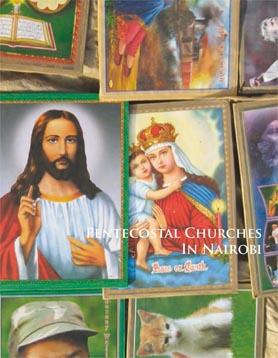Pentecostal Churches in Nairobi

Students: Andreas Kopp, Christoph Rauhut
Location: Group work in Nairobi
Date: December, 2007
Type: Research project, student work, Inhabiting Spaces
Since the foundation of Nairobi, religion has played a key role in the shaping of the city. Apart from the general fact that settlements in Kenya were often related to missionaries, the initial structure of the city divided the socio-urban landscape not only along racial, but also along religious lines. As just one example, the Asian communities set themselves apart from other social groups, creating coherent Hindu and Muslim areas in the city. The effects of these formation processes can still be witnessed today. More recently, areas with immigrants from predominantly Muslim countries such as Somalia, have created and developed their own neighborhoods in the city.
Today, religious activities make up an important part in the everyday lives of the Nairobi population. People from all social groups, religions and all areas of the city attend religious services regularly. Religious institutions occupy ‘traditional’ religious spaces such as churches, but increasingly they have started to inhabit unconventional spaces for their purposes in the city, often being of transitory nature. Churches congregate on the third floor of inner-city office buildings, in the banquet halls or conference rooms of the Kenyatta Conference Center, or in temporary tent constructions in parks or empty building lots. This use of ‘banal’ and mundane spaces for religious activities can maybe be traced back on the one hand to an attempt to overcome the classical authoritarian order of the Western cathedral model. Secondly - on a pragmatic level - it is related to a rapid increase in popularity of certain religious groups. Especially pentecostal churches have enjoyed an extreme popularity in recent years. Congregations often number in the thousands, with sometimes 4000 or 5000 people visiting sunday services. Churches erect temporary constructions such as tents to react in a flexible way to ‘demand’ and to house a growing congregation. These activities and the ways of inhabiting existing spaces have an effect beyond their immediate use and beyond the specific church community. They play a role in forming the city. They can upgrade an area, have an impact on local economy and rearrange infrastructure and traffic within the city. These religious activities are the perfect clients for temporary usage of architecture, ‘Zwischennutzung’ and a ‘recycling’ of existing building fabric.
Download the Book PDF

